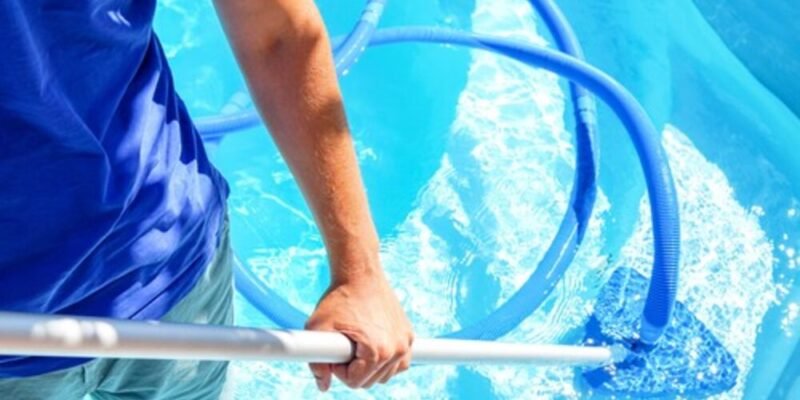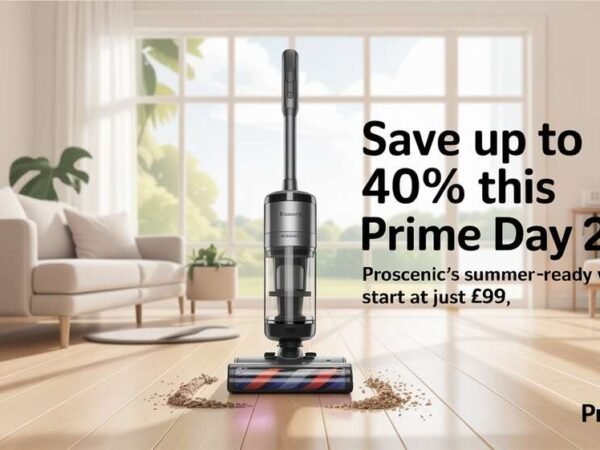For pool maintenance, the pH has to be balanced to ensure the safety of your swimmers and help prolong the life of your pool equipment. This helps keep water clear, chemicals to a minimum, and skin and eye irritation at bay. However, equally as crucial as maintaining water chemistry is using the right tools to keep your pool clean, like a robot pool cleaner. In this blog, we will address how to get the pH level right in the pool and how adjusting the pH in a pool can be complemented by a robotic pool cleaner to have your pool in outstanding condition.
What Is pH in Pool Water?
pH measures the water’s acidic/alkaline content. The pH scale measures how acidic or basic something is, ranging from 0 to 14 and 7 as neutral. Most pools do best in the 7.4 to 7.6 pH range. A high or low pH level affects your pool by creating cloudy water, scaling, or corroding your pool equipment.
Low pH (below 7.4):
This type of water is acidic, which can sting your skin and eyes and corrode your pool equipment.
High pH (above 7.6):
Alkaline water leads to scaling, reducing the effectiveness of your pool chemicals and potentially cloudy pool.
Why pH Matters for Your Pool?
This will help your pool chemicals and maintain the proper pH level. For example, chlorine is a more effective bactericide with a balanced pH. Balanced pH also prevents corrosion in your pool surfaces, heaters, and filters.
If you are aware of the purpose of pH, the next step is to read how you can adjust it efficiently and conveniently with the help of a bot pool cleaner.
Your Pool Is Too Acidic: How to Raise pH
The pH is easy to adjust in your pool. Here’s a step-by-step process to get it just right:
Test the Pool Water
Before altering anything, test the pH level of your pool water with a pool testing kit. Test strips or liquid test kits are available in your local pool supply store. Just dip the test strip in the water and compare the color to the chart on the packaging.
- In contrast, if the pH sits below 7.4, it’s deemed acidic.
- Above 7.6, the pH is considered alkaline.
- Adjust pH By Adding pH Increaser Or pH Reducer.
Adjust pH By Adding pH Increaser Or pH Reducer
Add the appropriate chemical if your pool’s pH is too high or too low.
pH Increaser:
If your pool’s pH is too low, you will need to add a pH increaser (made from sodium carbonate or soda ash). Add the chemical slowly in the center of the deep end of your pool with the pump running for proper distribution.
pH Reducer:
If your pool’s pH is too high, you will need a pH reducer (usually muriatic acid or sodium bisulfate). Again, assuming the pump is running, pour the chemical into the deep end.
Circulate the Water
After adding the pH adjusters, allow the pool water to circulate for at least 2-4 hours. This ensures that the chemicals are adequately mixed and evenly distributed throughout the pool.
Retest the Water
After the water has circulated, retest the pool’s pH and check whether it’s in the optimal range of 7.4 to 7.6. If necessary, repeat the steps until you are at the desired level.
Maintain pH Regularly
Keeping your pool’s pH balance is a continuous job. Check the water regularly—ideally every week—and adjust if necessary. A regular check-up will prevent problems in the future and lessen the chemical dosage required.
The Role of a Robot Pool Cleaner in pH Maintenance
The pH maintenance is where a robot pool cleaner comes to the rescue. What does a robot pool cleaner do to help with pH maintenance?
A robot pool cleaner can do more than make your pool sparkle. Robotic pool cleaners regularly disinfect your pool’s surfaces and sub-surface debris that could otherwise build up and disrupt water chemistry. Here, a robot pool cleaner like the Beatbot AquaSense or the Beatbot iSkim Ultra complements this maintenance, freeing up more time for ensuring a healthy pool:
Debris Removal
Leaves, dirt, and debris can throw off your water chemistry, especially if not removed promptly. A pool vacuum device will pick up these contaminants, decreasing the burden on the pool’s filtration system.
Better Circulation
Robotic cleaners scrub the pool’s surfaces and vacuum the bottom, both of which help with water circulation. Proper circulation assists chemicals such as pH adjusters circulate and stabilize pH quickly.
Keeping Algae Away
Algae can soon grow in pools with fluctuating pH levels. A swimming pool robot cleaner scrubbing the walls and floor minimizes algae buildup, and water balance can be safely maintained.
Tips for Effective Pool Care
Here are some other tips to help you maintain your pool in great shape:
Skim Regularly
A skimmer can also help collect leaves and larger debris before they sink to the bottom. This will prevent clogging in the blasting filter and help keep the water clean.
Use a Pool Vacuum
A pool vacuum can help pick up any larger debris the robot may have missed along with your robot pool.
Check Your Pool’s Alkalinity
Alkalinity is a significant factor in stabilizing the pH in your pool. Be sure your pool’s alkalinity is in the proper range (80–120 ppm) to help buffer the pH.
Upgrade to Smart Pool Devices
If you want to go the extra mile, install smart devices like Beatbot AquaSense Pro. Some models provide app connectivity, so you can monitor and control your pool cleaning while away.
Conclusion
In short, you need to regularly test your pool (in fact, it is essential for both its quality and equipment life). If you follow the tips in this guide and test your pH regularly, you can ensure that your pool stays in great shape. Hygiene from chemical balance, exercise from beach swimming, and robot pool cleaners like Beatbot AquaSense Pro or Beatbot iSkim Ultra are the ingredients for a great pool. So, sit back, relax, and let technology do the heavy lifting—and enjoy your pool with little work!
Also read interesting articles at Disboard.co.uk













